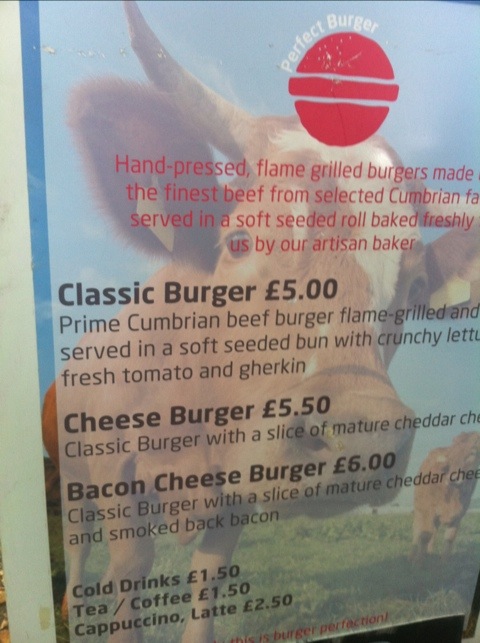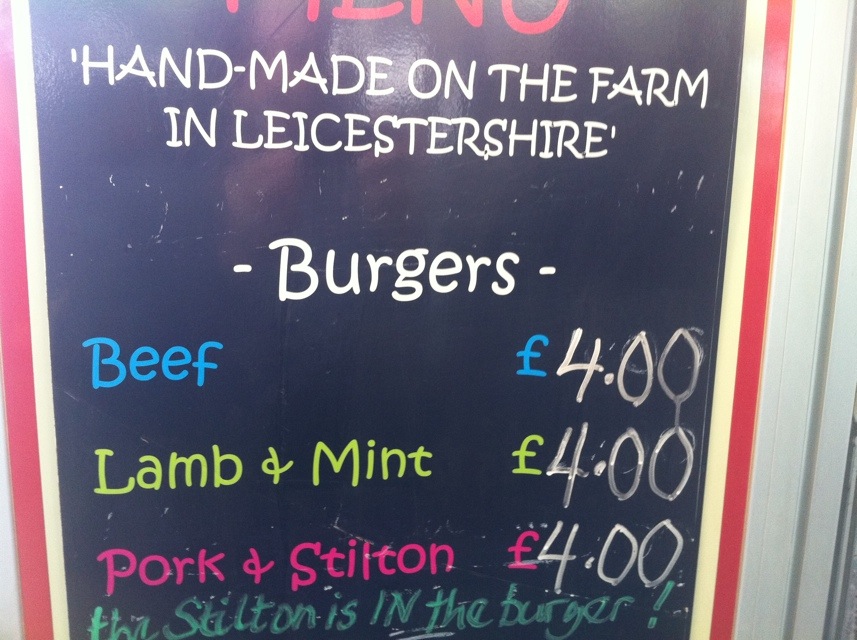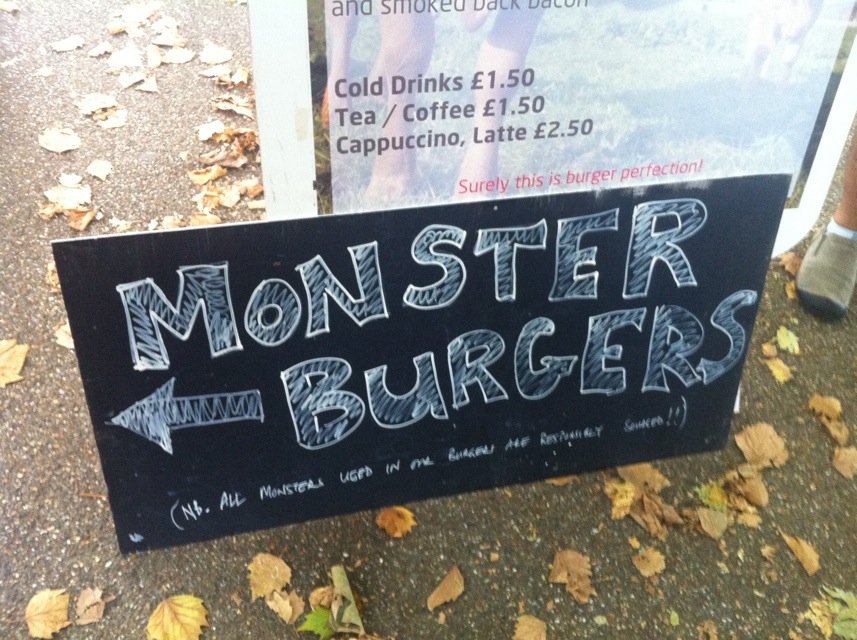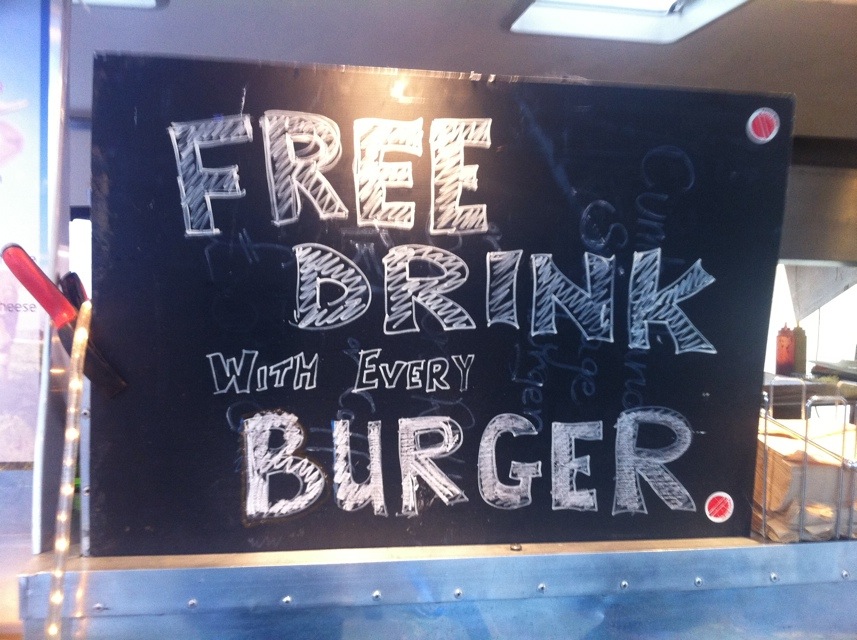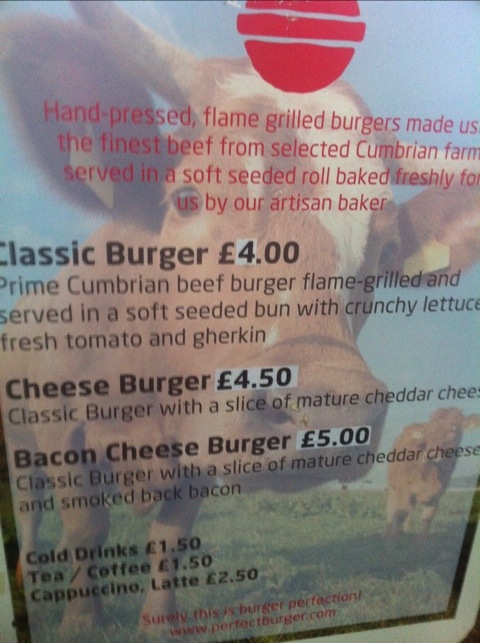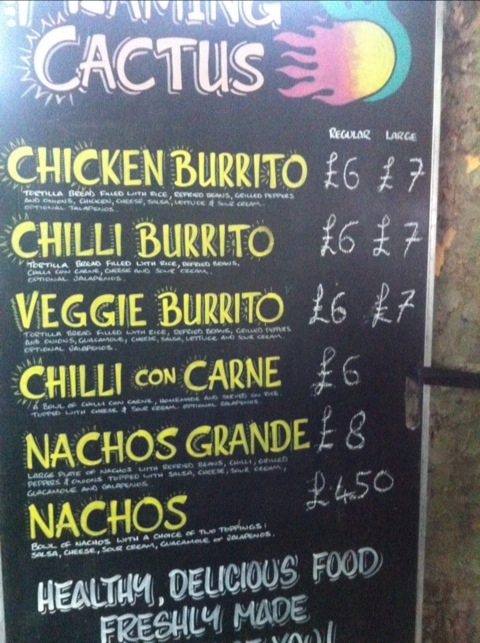To the Thames Festival, where the Hotelling model of competition is at risk of being disproved.
The festival is a weekend event along the south bank of the Thames – populated with stalls selling crafts, food and drink and this year, for some reason, promoting South Korean tourism. There is a wide range of fresh food available along a 1.5-mile stretch of river, but when I came across a hamburger van, I was surprised to notice that the festival organisers had decided to locate a second hamburger vendor right next to it.
On the first day of the festival I noticed a discrepancy between the two companies’ approaches. First, from Perfect Burger:
And now from Northfield Farm:
The results were predictable. With nothing visible to distinguish their product as better than the competition, Perfect Burger was selling almost nothing. I can’t say whether one burger was better than the other, but when one of them costs four pounds, why pay five?
During the remainder of that day, Perfect Burger tried to respond with some last-minute brand differentiation and bundling tactics:
But apparently that was not enough, because the next day their menu looked like this:
I spoke to the operators who said sales were so dreadful on the first day that they had been forced to cut the price. Results were much better on day two, but they were understandably furious with the festival organisers for locating both vans directly beside each other.
There are a few tactical lessons from this, and a deeper point about the economics of competition. The tactical messages include:
- If your product is sold alongside a competitor, and you don’t distinguish it on any clear basis, you will be forced to match their price.
- To avoid this, make your product benefits tangible and clear in your branding. Northfield Farms conveys freshness and authenticity while Perfect Burger is an assertion of quality with little rationale behind it. Indeed, purely on the basis of brand I would expect Northfield to be able to sustain a price premium, but not the other way around.
- Quality is irrelevant in some contexts. When I spoke to the Perfect Burger staff, they told me that their burgers are better. This may well be true, but they are selling in a festival to one-off customers – if nobody has heard of you, they will only buy on first impressions.
- Write your prices in chalk on a blackboard! Economists talk about prices failing to adjust to market conditions because of “menu costs” – the physical costs of changing prices, relabelling etc. This is a very literal version of that. I suspect that if the prices had not been printed on a board, Perfect Burger might have felt more able to cut them during the first day instead of overnight.
The deeper point is about the Hotelling model. This model, based on a logical economic argument, suggests that two vendors in competition will want to make their products as similar as possible. The standard example is ice cream stands on a beach. According to Hotelling’s theory, two ice cream stands selling the same products will not, as you might expect, locate themselves in different parts of the beach. Instead, they will both set up right next to each other in the middle of the beach – because otherwise each one can steal customers from the other by moving slightly closer to the centre. Competition will force them to end up occuping the same space in the middle, even though it is not the best outcome for customers.
Hotelling admitted his model was a simplification – it ignores what happens if the vendors are selling different products, and in its basic form it only allows for two competitors. But this weekend’s example shows that even when those conditions are fulfilled, the model omits a key variable which is crucially important to real businesses.
That is: most successful businesses avoid competing on price. Businesses are not just fighting with each other; they are also in a game with their own customers. They each want to transfer as much money as possible from the customers into their own pockets – but competition prevents them from doing that.
Inevitably, if vendors are positioned directly beside each other, consumers will compare them on price. If they are separated, consumers will be much less likely to head over to the competitor to make a comparison – indeed most consumers will not even know there is an alternative. Thus, both vendors will be able to defend a premium price.
The traditional view of Hotelling is that the vendors compete for business from each other – at the expense of the customer, who has to walk further for their hamburger. The traditional view of competitive markets is that customers force down prices through competition – at the expense of vendors, who cannot maintain high profits. This example shows that it is possible for the situation to serve nobody’s interests. Customers have to walk halfway along the riverbank for a burger, while the vendors suffer price competition and lose their profit margin.
Putting the stands in a different position would save time for customers and repay the vendors in extra profits – everyone wins. Economists call this a free lunch. Only in economics can you get a free lunch for just £5.
In fact, there was one winner from all this. People who were not selling burgers apparently felt no pressure to cut prices at all…

